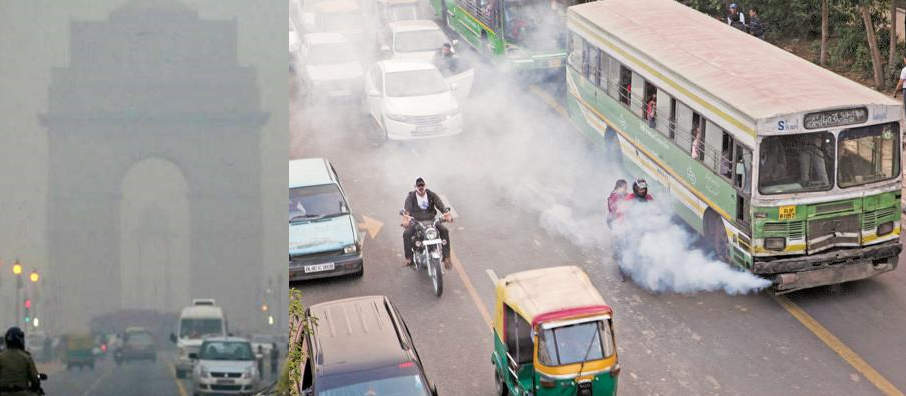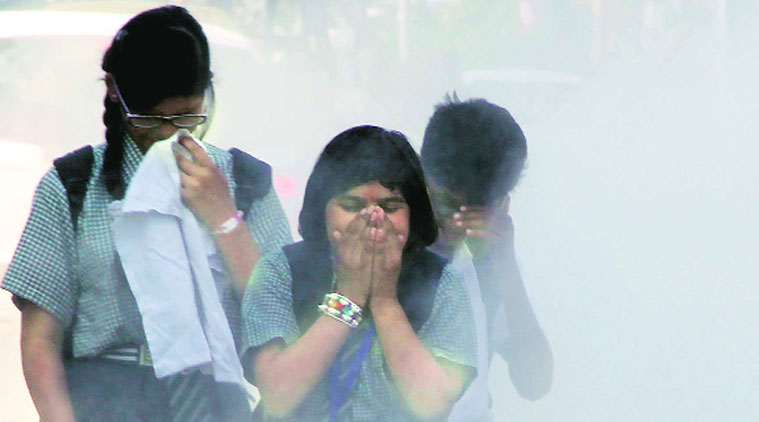
Delhi Air Just Got Worse, Healthy Can Also Fall Sick
Delhi, the national capital of India has been dealing with high levels of dangerous particulate matter (PM), posing serious health risks, especially for children, the elderly and people with compromised immune system. A day after the Delhi High Court observed that the current air pollution levels in Delhi were akin to “living in a gas chamber,” the Delhi government (AAP) announced stringent measures introducing ‘even-odd’ car strategy to bring the situation under control.

Air quality readings across various places in the city saw a sudden spike which showed PM 10, 19 times above the prescribed limit and PM 2.5 almost eight times above the prescribed limit. (PM10 refers to the bigger particles and PM2.5 stands for the smaller particles). As fine particles (PM 2.5) is much smaller than inhalable coarse particles(PM10), its negative effects on human health is more severe although both particles are harmful. This has the potential to affect healthy people and seriously impact those with existing respiratory ailments.
The real time readings of Delhi Pollution Control Committee (DPCC) monitoring stations had PM 10 and PM 2.5 at 1903 and 452 microgram per cubic meter in Anand Vihar, east Delhi, as recorded at around 9 pm. PM 10 was at 753 microgram per cubic meter in RK Puram, south of the city, at the same time. PM 10 and PM 2.5 were at 459 and 255 micrograms per cubic meter respectively in Punjabi Bagh, west Delhi.
These are, collectively, the three most polluted locations in the city. Permissible levels of PM 10 and PM 2.5 are 100 and 60 microgram per cubic meter respectively. The meteorological department (IMD) has attributed the sudden spike in pollutants across the capital to calm winds and an increase in humidity in the air.
PM is a complex mixture that may contain soot, smoke, metals, nitrates, sulfates, dust, water, and tire rubber. The size of particles is directly linked to their potential for causing health problems.
When we breathe, PM2.5 can get deep into your lungs and some may even get into your bloodstream. Exposure to fine particles can affect the heart and lungs. Other health effects include – Coughing, Shortness of breath, Wheezing, Irritation of the eyes, Nonfatal heart attacks, Aggravated asthma, nose and throat, Development of chronic respiratory disease in children, Premature death in individuals with existing heart or lung disease, including death from lung cancer. PM 2.5, especially, is considered by the World Health Organization (WHO) as a cancer causing agent.
National air quality index of CPCB also had ‘severe’ readings recorded from the areas of Punjabi Bagh, Mandir Marg and R K Puram stations, where PM 2.5 was the most prominent pollutant.
“Due to lack of proper winds, inversion conditions have already begun. This is when hot air is unable to rise above a certain level and dispersion of pollutants gets blocked,” said Anumita Roychowdhury, Executive Director, Research and Advocacy at Centre for Science and Environment Forecasting and Research (SAFAR). “In October 2015, we registered only three per cent of the total days with ‘severe’ air pollution level. The same rose upto 73 per cent in November. What worries us is that December might surpass these numbers as the winter sets in,” she added.
Interestingly, Beijing, China’s Capital city, also issued its first red alert of the year on air pollution on Monday. It happened as the city of over 22 million people was enveloped by thick smog, which is being stated to be the worst in recent months.
Doctors advice to Leave Delhi to save their Kids
The city has been blanketed in grey smog, and while there is no reliable data on respiratory diseases, most doctors in the capital report a sharp spike in pollution-related illness during the winter months.

Delhi’s air is getting polluted by the day. “If you want your kids to grow up into a normal, healthy person, then Delhi is not the place where he or she should be brought up. Around 22 lakh school children in the national capital are growing up with irreversible lung damage,” Dr Sanjay Jain, ENT Specialist from SCI International Hospital said.
“People with a history of respiratory tract infections should stay more careful. This is the worst possible time of the year for them. High level of precautionary measures should be taken. People should cover their faces while travelling. Even staying indoors is not safe as suspended air particles tend to enter through windows,” said Dr JC Suri, Professor and Head of Pulmonary Medicine at Safdarjung hospital.